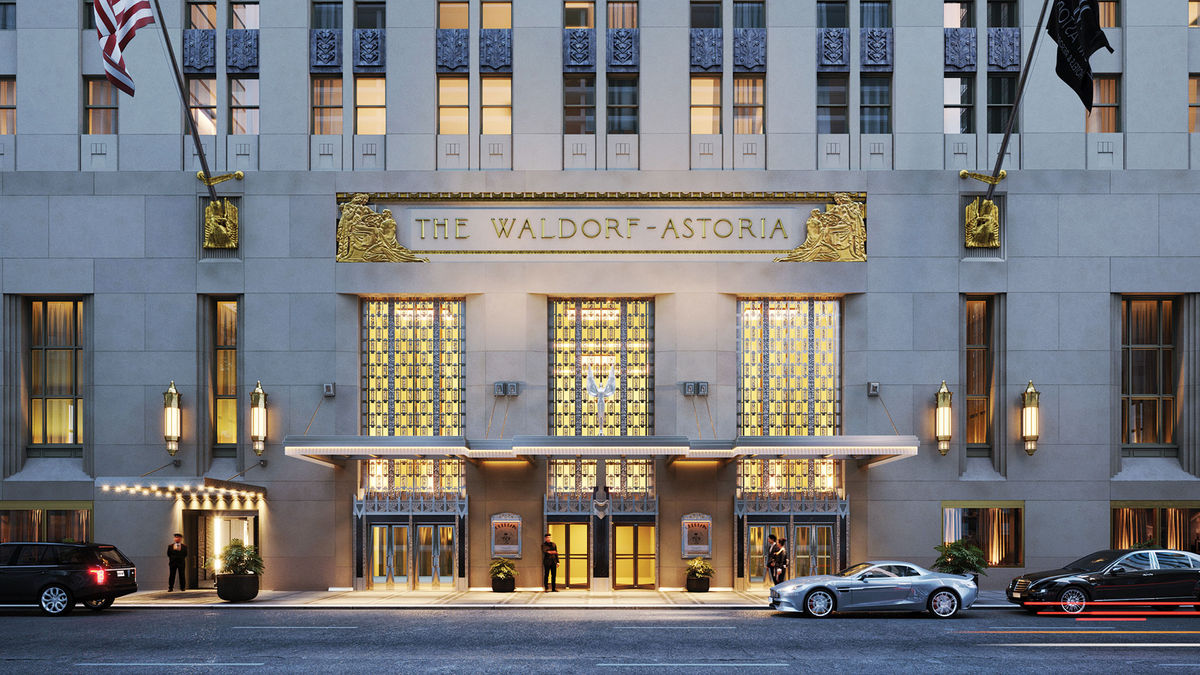NEW YORK — Manhattan’s luxury hospitality landscape has evolved dramatically since the Waldorf Astoria New York opened its doors on Park Avenue in 1931.
And it has changed more still since the landmark art deco property shut its doors in 2017 for a massive redevelopment.
But Dino Michael, global category head of Hilton luxury brands, said the revamped Waldorf Astoria New York will be well equipped to appeal to today’s modern traveler when it reopens at the end of this year.
Most notable among the changes is that there will be fewer, but larger, hotel rooms. The Waldorf had more than 1,400 guestrooms originally, and the plans call for going down to 375 hotel rooms and 375 condo-residences, Michael said.
“The rooms will double in size, starting at around 600 square feet, and I think that’s the most exciting part: We’ve got a product now that meets current high-net-worth and luxury traveler needs,” Michael said.
Guests and residents will also benefit from arrival areas that Michael describes as less “overwhelming,” thanks to two porte-cocheres that create what he describes as “a decompression moment.”
“Before, you’d stop right on Park Avenue, with someone honking behind you,” Michael said. “It was always a rush. So, we’ve really been thoughtful about [redesigning the] arrival.”
Other public spaces are similarly receiving a refresh. The hotel’s famed Peacock Alley restaurant will be “reinvented,” he said, while its Grand Ballroom will be fully restored but also outfitted with modern tech.
“Beneath this beautiful art deco veneer, you’ll have the technology you need to do the events of today,” Michael said. “The event space is important, and I think that the Waldorf Astoria will once again be a focal point for the New York event calendar.”
And while some New York hotels have leaned into a form of high-end hospitality that puts the emphasis on exclusivity, Michael is hoping the Waldorf Astoria New York will put a more inclusive spin on the concept of luxury.
“I use the word ‘exclusive’ in terms of being special, but I don’t want exclusivity to mean exclusion,” Michael said. “Between the restaurants, the bars, the event spaces, there’s so many reasons to come here, and we want to be open to all. This is a hotel that belongs to New York.”
A rendering of the Waldorf Astoria New York’s restored lobby. Photo Credit: Noë & Associates/Courtesy The Boundary
The Waldorf Astoria New York’s highly anticipated reopening is a long time coming. The property, which was acquired by China’s Anbang Insurance Group from Hilton for $1.95 billion in 2015, was originally expected to take around two to three years to be redeveloped following its 2017 closure.
Work was delayed by both the pandemic and a high-profile corruption scandal in 2018, when Anbang was seized by the Chinese government. The property and other Anbang assets are now controlled by the Dajia Insurance Group.
The impending return of the Waldorf Astoria brand’s crown jewel comes as the flag enjoys a period of expansion.
The 252-room Waldorf Astoria Cairo Heliopolis in Egypt debuted last August, while the 50-villa Waldorf Astoria Seychelles Platte Island opened in late January.
Additional openings, including the Waldorf Astoria Kuala Lumpur, Waldorf Astoria Osaka, Waldorf Astoria Costa Rica Cacique and Waldorf Astoria London Admiralty Arch, are slated for 2025.
According to Michael, this robust pipeline is reflective of Hilton’s bullish outlook for its luxury portfolio, which also includes the Conrad and LXR brands.
“Luxury has been really resilient,” Michael said. “We’re seeing a trend around people being willing to sacrifice certain things, but not travel. They may sacrifice material purchases so they can travel more. They want to continue getting experiences, and in luxury, we’re fortunate in that we provide experiences.”










